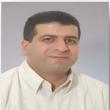Extraction
Medicinal Herbs and Methodologies for Their Pharmaceutical Compounding In the West Bank/Palestine
Sun, 2014-11-23 14:42 — Abdel Naser ZaidThe aim of this study was to carry an ethnopharmacological survey on medicinal herbs and the methodology used in extraction of active compounds. A survey study was carried out; it included herbalists, herbal shops and people who are involved in traditional Arabic medicine. For each disease included, informants were asked to list plants used, the used part from which the products were prepared as well as the method of preparation. A total of 109 plants were identified. Within the plants used, leaves (47.3%), fruits (18.5%) and seeds (18.0%) were the plant parts most widely used. Methods of preparation were mainly decoction (boiling) by 51%, and then infusion (drenching) by 17%. Some plants were prepared as creams, powders, syrups, added to food or cooked. Many plant species are still used by herbalists in our country for treating various human diseases and ailments. Most plants are prepared by boiling, which may cause degradation of active ingredients. Preparations should take into consideration the stability of the active ingredients.
Medicinal Herbs and Methodologies for Their Pharmaceutical Compounding In the West Bank/Palestine
Sun, 2014-11-23 14:34 — Nidal Amin JaradatThe aim of this study was to carry an ethnopharmacological survey on medicinal herbs and the methodology used in extraction of active compounds. A survey study was carried out; it included herbalists, herbal shops and people who are involved in traditional Arabic medicine. For each disease included, informants were asked to list plants used, the used part from which the products were prepared as well as the method of preparation. A total of 109 plants were identified. Within the plants used, leaves (47.3%), fruits (18.5%) and seeds (18.0 %) were the plant parts most widely used. Methods of preparation were mainly decoction (boiling) by 51%, and then infusion (drenching) by 17%. Some plants were prepared as creams, powders, syrups, added to food or cooked. Many plant species are still used by herbalists in our country for treating various human diseases and ailments. Most plants are prepared by boiling, which may cause degradation of active ingredients. Preparations should take into consideration the stability of the active ingredients.
Medicinal Herbs and Methodologies for Their Pharmaceutical Compounding In the West Bank/Palestine
Sun, 2014-08-03 13:58 — Rowa' Jamal Al-RamahiThe aim of this study was to carry an ethnopharmacological survey on medicinal herbs and the methodology used in extraction of active compounds. A survey study was carried out; it included herbalists, herbal shops and people who are involved in traditional Arabic medicine. For each disease included, informants were asked to list plants used, the used part from which the products were prepared as well as the method of preparation. A total of 109 plants were identified. Within the plants used, leaves (47.3%), fruits (18.5%) and seeds (18.0%) were the plant parts most widely used. Methods of preparation were mainly decoction (boiling) by 51%, and then infusion (drenching) by 17%. Some plants were prepared as creams, powders, syrups, added to food or cooked. Many plant species are still used by herbalists in our country for treating various human diseases and ailments. Most plants are prepared by boiling, which may cause degradation of active ingredients. Preparations should take into consideration the stability of the active ingredients.


